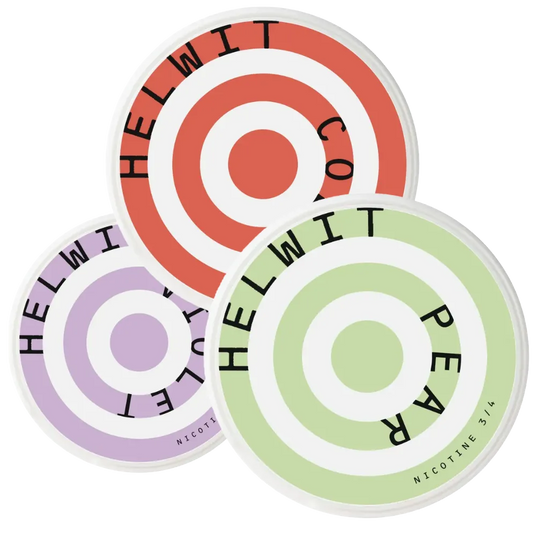
Are ZYNs Bad for You? The Facts Explained
Curious whether ZYNs are really bad for you? Our latest guide breaks down what’s in them, how they compare to smoking and vaping, and why more adults are making the...
Lewis Cash |
Get 15% OFF Your First Order!
Why nicotine strength can be confusing
When browsing nicotine pouches, you’ll see two different strength measures on packaging and product descriptions:
mg per pouch
mg per gram (mg/g)
At first glance, they look interchangeable, but they’re not. Understanding the difference is important if you’re comparing brands, managing your nicotine intake, or moving between strengths.
Let’s look at some real examples from our shop:
| Brand & flavour | Strength shown | Pouch weight | Nicotine per pouch | Nicotine per gram |
|---|---|---|---|---|
| Nordic Spirit Spearmint (Medium) | 6 mg/pouch | 0.7 g | 6 mg | ~8.6 mg/g |
| VELO Freeze (X-Strong) | 11 mg/pouch | 0.7 g | 11 mg | ~15.7 mg/g |
| ZYN Mini Dry Cool Mint (Low) | 3 mg/pouch | 0.4 g | 3 mg | ~7.5 mg/g |
As you can see, the mg per pouch figure is most useful for everyday users, while mg/g is better for comparing across different pouch sizes.
Nordic Spirit Spearmint Nicotine Pouch - 6mg is backordered and will ship as soon as it is back in stock.

For official information on nicotine and quitting smoking, see:
When comparing nicotine pouch strengths, the most important figure for most users is mg per pouch, as it shows the actual amount of nicotine you will consume from each pouch. By contrast, mg per gram (mg/g) indicates the concentration of nicotine in the pouch material, which is helpful when comparing products of different sizes but can be misleading if read as the total nicotine content. Because brands label strengths differently, it’s important to check carefully whether you’re looking at mg/pouch or mg/g to avoid confusion.
For beginners, lower-strength products in the 2–4mg per pouch range are usually the best place to start, since they allow new users to assess tolerance and minimise side-effects like dizziness or nausea. Users with some experience may feel more comfortable with medium-strength pouches of around 6–8mg per pouch, which provide an effect similar to that of a standard cigarette. Those with higher nicotine tolerance sometimes prefer 10mg+ per pouch, but these are not recommended for new users.
Ultimately, choosing the right pouch means combining both mg/pouch and mg/g information with the pouch size and brand recommendations. While nicotine pouches are smoke-free and discreet, they are not risk-free products and should only be used by adults who already consume nicotine.
Mg per pouch tells you the actual nicotine content in each pouch, while mg per gram shows the concentration relative to the pouch weight. Mg per pouch is the more practical measure for everyday use.
This usually comes down to labelling conventions. Scandinavian brands in particular often use mg/g because it was historically common with snus. UK users may find mg/pouch clearer, since it directly reflects what you consume.
If you’re new to nicotine pouches, start with lower strengths of 2–4mg per pouch. Regular users often move to 6–8mg, while high-strength options above 10mg are best left to experienced users with a strong tolerance.
Yes. A small pouch with a high concentration of nicotine (mg/g) can still have less nicotine overall than a larger pouch with a lower mg/g value. That’s why it’s important to look at both numbers.
No. While they are smoke-free and free from tobacco leaf, nicotine is addictive and can have side-effects such as gum irritation, hiccups, or nausea. Pouches should only be used by adults who already consume nicotine.
Lewis Cash